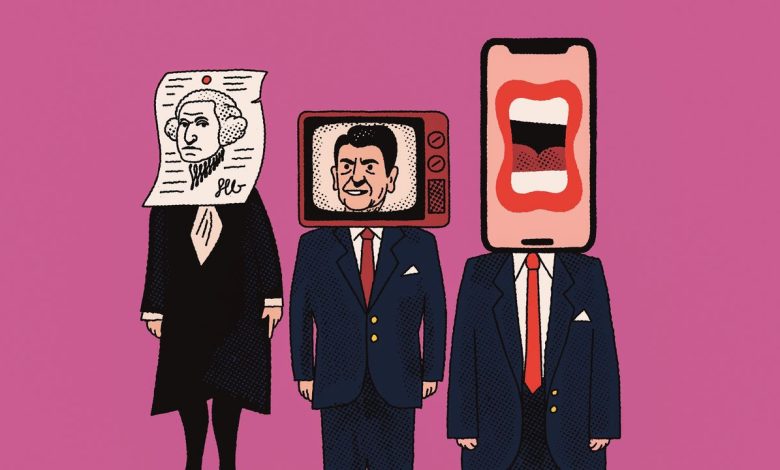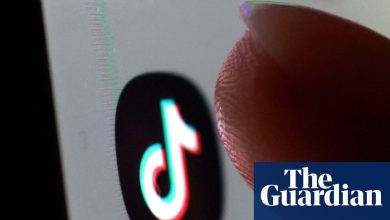Trump and the Presidency That Wouldn’t Shut Up

The list of figures in American history with whom Donald J. Trump has been compared since he announced his bid for the Presidency a decade ago is longer than his trademark necktie, as red as a gash. It’s taller than Trump Tower, gleaming like a blade. It has a higher turnover than his beleaguered first Cabinet. It includes even more goons, toadies, and peacocks than his current Administration. And yet the comparisons keep coming, in the daily papers, in the nightly podcasts, online, online, online. Is Trump more of a liar than Joseph McCarthy; is he slicker than Huey Long? Is he as mean-spirited as Father Charles Coughlin, more sinister than George Wallace? Is he as much of a fraud as P. T. Barnum, even more of an isolationist than Charles Lindbergh? He is trickier than Richard (Tricky Dick) Nixon, but to what degree?
Trump plays this game, too. He loves it, and why not? It only ever helps him, inflates, magnifies, and amplifies him, the drumbeat deafening, ceaseless, Trump, Trump, Trump. He’s Andrew Jackson (or is he more like Andrew Johnson?); he’s Ronald Reagan. He thinks only Abraham Lincoln has been treated as unfairly as he has—or, no, “I believe I am treated worse.” Shall we compare him to a summer’s day?
Everything that has happened in the furor, disarray, and murderous violence of American politics over the past decade has led the commentariat to scramble for antecedents. That includes me. Is this unprecedented? This is the question journalists have been asking historians for a decade now. It arrives by text and voice mail. It arrives by post and e-mail. It knocks on the door and all but raps on the windowpane, tap, tap, tapping. I have been asked this question in the dog park, at the drugstore, in a hayfield, by my mailman, during a snowstorm, while knitting in my kitchen, and in every last blasted Zoom room. And historians—or most of us, anyway—answer, meekly, bleakly, dutifully, hauling out of the archives the disputed election of 1876, the 1970 shooting at Kent State, the parents’-rights movement of the nineteen-twenties, the impeachment of the Supreme Court Justice Samuel Chase. Compared to x, Trump is y. But why? On the upcoming fifth anniversary of the insurrection at the U.S. Capitol, might it not be best, at this point, simply to stop? Very little in human history is altogether without precedent if you look at it long enough. And what of it? If U.S. history is a map, we are off the grid, over a cliff, lost at sea without a compass. Can anyone honestly maintain that the caning of Charles Sumner on the floor of the Senate, in 1856, or the shots fired by four Puerto Rican nationalists from the balcony of the Capitol, in 1954, offer meaningful points of comparison to the assassination of Charlie Kirk or the events of January 6th?
I don’t mean to suggest that there’s no reason to study history, to write and to read history. There’s every reason, even more so in tempestuous times than in quieter ones. Learning to code turns out to have been a terrible call; how much more precious to have studied the past, the mystery of iniquity, the chaos of strife, the messy, gripping, blood-drenched record of yearning that is the twisted and magnificent course of human events. Nor do I mean to suggest that this is the worst moment in the history of the United States. It is not. I mean only to warn that the false analogy offers false comfort. Analogies are tempting because they can be helpful, a flashlight on a moonless night. “The many uses of analogy,” the historian David Hackett Fischer wrote in a 1970 book called “Historians’ Fallacies,” are “balanced by the mischief which arises from its abuse.” A flashlight is not the same as daylight. With a flashlight, you see only what you’re pointing it at, and yet, cheered by its warm glow, you might forget that you are, in fact, in the dark.
Peer into the dark. Earlier this fall, Trump reposted on Truth Social a four-minute news clip generated by A.I. The clip purported to be a segment from Lara Trump’s Fox News show, reporting on Trump’s announcement of the launch of “medbeds . . . designed to restore every citizen to full health and strength” at special hospitals about to open all over the country. Medbeds, which can cure all ailments and reverse aging, appear regularly in science fiction. (Think of the “biobeds” in the “Star Trek” sick bay.) They began featuring in online conspiracy theories in the early twenty-twenties; QAnoners claim that medbeds exist, and have existed for years, and that the rich and powerful use them (and that J.F.K. himself is on one, still alive), and that soon Trump will liberate them for use by the rest of us, as if Trump were Jesus opening the gates of Heaven and medbeds eternal life.
Take out your flashlight and ask the inevitable question: Is there any precedent for a President of the United States doing such a thing? Is American history any guide to understanding why Trump, or someone on his staff, posted (and soon afterward deleted) a fake video about a nonexistent news report concerning a fictional miracle cure, an episode whose political significance strikes me as asymptotically approaching zero?




